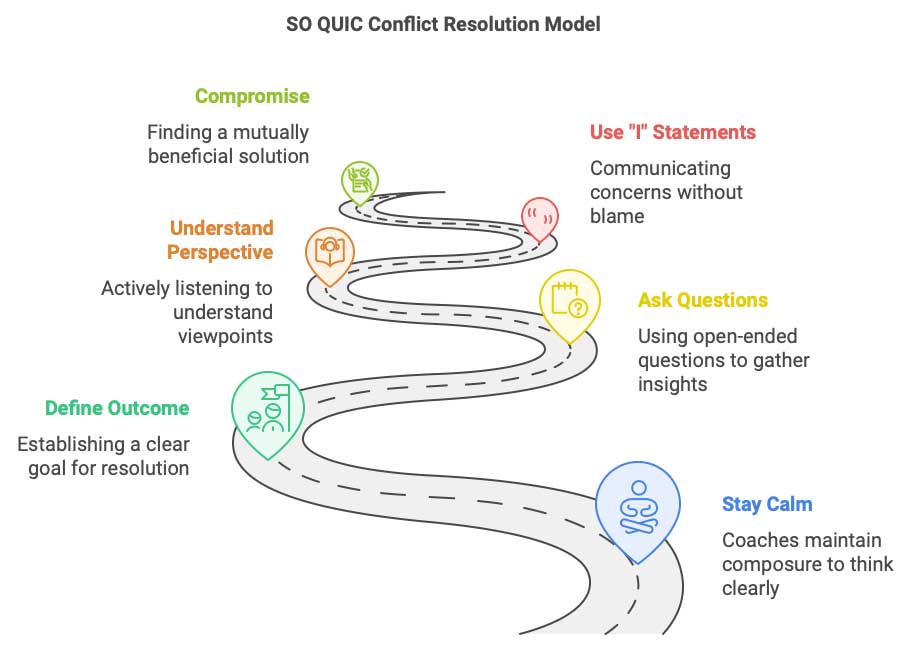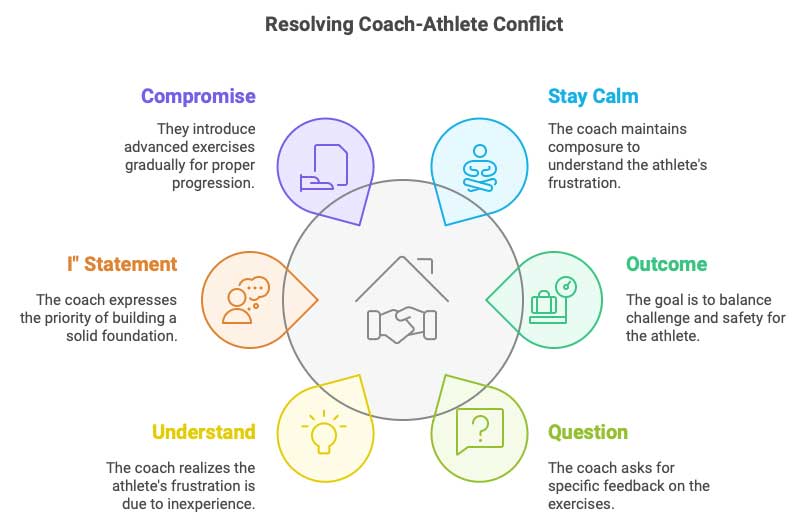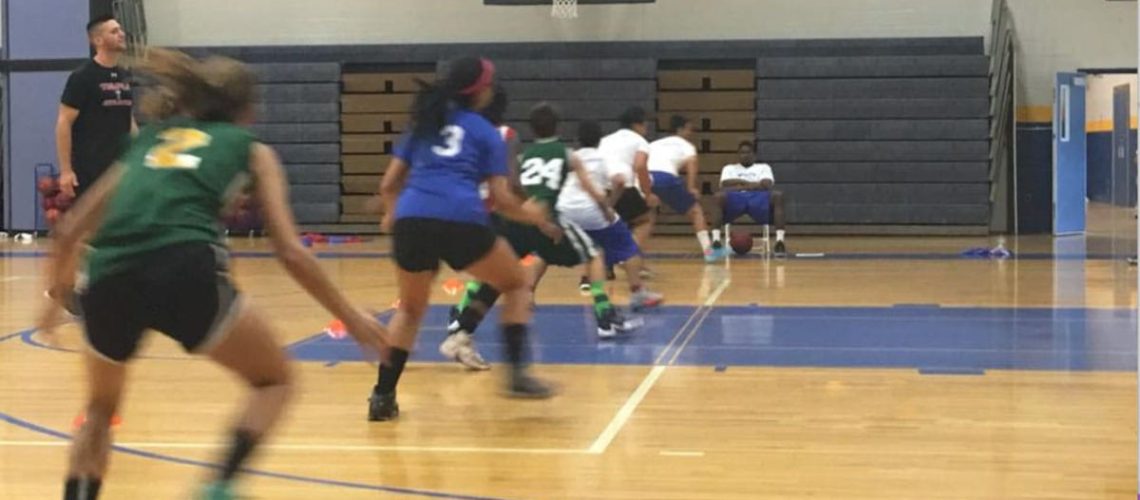By Brenden Ostaszewski, PhD
Conflict is unavoidable in any setting—especially in high school sports programs where coaches, athletes, and parents interact daily under the pressures of competition and performance. As a strength and conditioning coach, managing these conflicts effectively is crucial to maintaining a positive and productive environment. The ability to resolve disagreements calmly can make all the difference in athlete performance, team cohesion, and long-term success.
Enter the SO QUIC Model for conflict resolution, a structured framework designed to navigate conflicts constructively. Whether it’s disagreements with athletes, misunderstandings with parents, or miscommunications with fellow coaches, the SO QUIC Model offers an actionable roadmap for resolving conflicts before they escalate.
Let’s break down how you can apply each step of the SO QUIC Model in your strength and conditioning program.
The SO QUIC Model: Step-by-Step Conflict Resolution
S – Stay Calm
Emotions run high in conflicts, and staying calm is the essential first step. When tensions rise—whether it’s due to athlete frustrations or schedule changes—coaches need to take a moment to breathe, reflect, and reset. Staying composed allows you to think clearly and handle the conflict with poise, preventing knee-jerk reactions that could escalate the situation.
O – Outcome
What do you want to achieve? Defining the desired outcome helps guide the conversation toward a constructive resolution. For coaches, the goal might be better communication with an athlete or ensuring team cohesion. A clear outcome keeps both parties focused on solutions rather than frustrations.
Q – Question
Questions are powerful tools in conflict resolution. Instead of making assumptions, ask open-ended questions to understand the other person’s perspective. For example, “What part of the program feels too easy to you?” encourages athletes to share their thoughts, helping you gather insights and uncover the root of the issue.
U – Understand
Active listening is the foundation of trust. Take the time to understand the other party’s viewpoint—whether it’s an athlete who feels under-challenged or a parent concerned about playing time. Empathy strengthens relationships, making it easier to find common ground.
I – “I” Statement
Expressing your thoughts with “I” statements avoids blame and promotes open communication. For example, instead of saying, “You’re not taking the program seriously,” try, “I feel concerned that we’re not on the same page about your training goals.” This approach fosters a collaborative environment, where both sides feel respected.
C – Compromise
Most conflicts require some level of compromise. In strength programs, this might mean adjusting workout plans to better meet athlete needs or balancing individual and team goals. The goal is to find a solution that benefits everyonewhile keeping safety and performance at the forefront.

Applying SO QUIC: A Real-Life Coaching Scenario
Imagine a conflict arises between a coach and an athlete over the training regimen. The athlete believes the program is too easy, yet struggles with fundamental movements.
- Stay Calm (S): The coach takes a moment to stay composed, focusing on understanding the athlete’s frustration.
- Outcome (O): The goal is to balance challenge and safety, ensuring the athlete progresses without risking injury.
- Question (Q): The coach asks the athlete for specific feedback about which exercises feel too easy.
- Understand (U): Through discussion, the coach realizes the athlete’s frustration stems from lack of experience, not lack of challenge.
- “I” Statement (I): The coach responds, “I hear that you find the program easy, but my priority is to ensure we build a solid foundation first.”
- Compromise (C): Together, they introduce more advanced exercises gradually, focusing on proper form and progression.

This collaborative approach not only resolves the conflict but also strengthens the coach-athlete relationship—setting the athlete on a path to success with mutual trust and respect.
Why Conflict Resolution Matters in High School Sports
High school athletes are under tremendous pressure to perform, and miscommunications are bound to happen. As a coach, your ability to resolve conflicts effectively builds trust, promotes teamwork, and ensures athletes stay focused on their goals.
Implementing the SO QUIC Model not only strengthens your conflict resolution skills but also enhances the culture of your program, fostering an environment where athletes feel supported, heard, and empowered to excel.
About the Author
Dr. Brenden Ostaszewski, CSCS, RSCC, is a Health Educator and Strength and Conditioning Coach at The Forman School, where he specializes in working with students with ADHD and dyslexia. With a PhD in Health and Human Performance from Concordia University Chicago, a master’s degree in Exercise Science and Health Promotion from California University of Pennsylvania, and a bachelor’s degree in Kinesiology from Temple University, Dr. Ostaszewski brings a wealth of expertise to his work in education and athletics.


